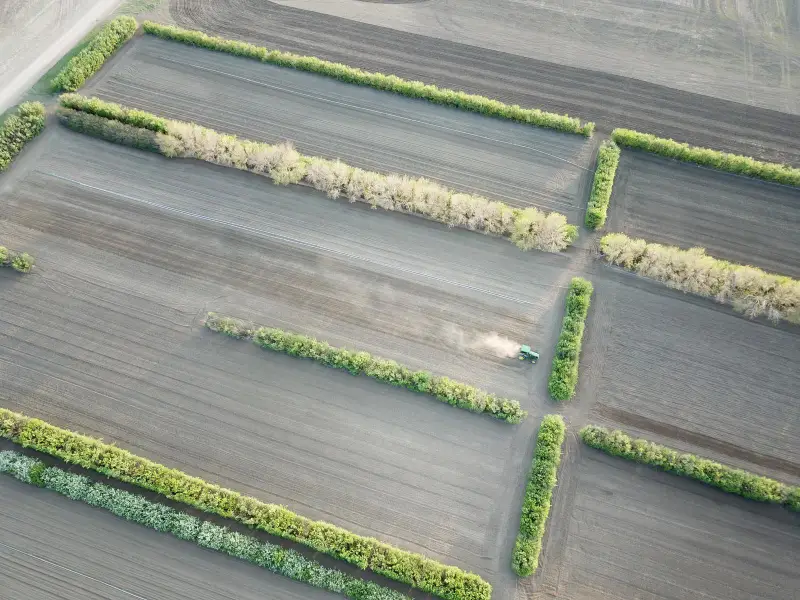Best strategies for winning in multiplayer games sets the stage for an exploration of the dynamic world where gamers thrive through collaboration and skill. Mastering the intricacies of game mechanics is crucial for any player aiming to elevate their performance. From understanding character abilities to deciphering complex interactions within a team, every detail contributes to the overall gaming experience. This journey delves into effective teamwork, communication, and the art of resource management, all pivotal elements that can determine the victor in competitive multiplayer environments.
As players navigate various challenges, grasping the underlying game mechanics becomes essential. For instance, recognizing the specific strengths and weaknesses of characters not only enhances individual gameplay but also significantly impacts team dynamics. By honing these skills and fostering clear communication, players can strategize more effectively and create an environment ripe for victory.
Game Mechanics Understanding
Mastering game mechanics is a fundamental step for players aiming to excel in multiplayer games. A thorough comprehension of these mechanics can significantly enhance strategic options, allowing players to make informed decisions during gameplay. This foundational knowledge not only improves individual performance but also contributes to the overall success of a team.
Game mechanics encompass a wide range of systems and rules that govern how a game operates. Understanding these mechanics is crucial as they dictate player interactions, abilities, and the overall flow of the game. For instance, mechanics such as cooldowns, resource management, and movement dynamics can dramatically influence gameplay outcomes.
Common Multiplayer Game Mechanics
Diverse multiplayer games incorporate various mechanics that shape player experiences. Familiarity with these mechanics can inform strategies and improve team coordination. Important mechanics to consider include:
- Cooldowns: The period a player must wait before using a particular ability again. Understanding cooldowns allows players to time their actions effectively, maximizing their impact during critical moments.
- Resource Management: Managing resources such as health, mana, or ammunition is essential for sustaining performance in battle. Players skilled in resource management can ensure longevity in fights and contribute consistently to their team’s objectives.
- Movement Mechanics: Mechanics related to player mobility, such as sprinting, dodging, or jumping. Mastery of movement can provide tactical advantages, allowing players to evade attacks or position themselves favorably in combat.
- Team Synergy: Understanding how different characters and their abilities interact can enhance team dynamics. Players can leverage complementary abilities to create powerful combos or cover each other’s weaknesses.
Each of these mechanics plays a pivotal role in shaping the gameplay experience. For instance, in a game like “League of Legends,” understanding the cooldowns of abilities can mean the difference between winning or losing a crucial team fight.
Influence of Character Abilities on Team Dynamics
Character abilities in multiplayer games are not merely tools for individual empowerment; they fundamentally shape team interactions and strategies. Each character’s unique abilities can either synergize or clash with those of teammates, influencing overall performance and tactical approaches.
Understanding character abilities allows players to:
- Identify Roles: Each character typically has a designated role (e.g., tank, healer, damage dealer). Recognizing these roles helps players understand their responsibilities within a team and how to best support one another.
- Coordinate Abilities: Players can plan their movements and abilities around the knowledge of what teammates can provide. For instance, a support character can enhance a damage dealer’s effectiveness through buffs, while a tank can create openings for a ranged attacker.
- Counter Opponents: Knowing the strengths and weaknesses of both allies and enemies allows for strategic counterplays. For example, if an enemy has strong area-of-effect abilities, a coordinating team may choose to spread out to minimize damage.
- Adapt Strategies: As the game evolves, so should the team’s approach. Players who recognize when to adjust their tactics based on the unfolding dynamics of ability interactions are often more successful.
By mastering game mechanics and understanding character abilities, players can greatly enhance their effectiveness in multiplayer environments. This knowledge empowers them to make strategic decisions that lead to victory, emphasizing the importance of preparation and adaptability in competitive gaming.
Teamwork and Communication Strategies

In multiplayer games, the strength of a team often lies in its ability to communicate effectively and work collaboratively. Successful players understand that individual skill is important, but without solid teamwork, even the most talented player can falter. This section explores actionable strategies that enhance team collaboration through effective communication and defined roles, fostering a trustworthy environment that promotes synergy among teammates.
Effective Communication Methods
Establishing clear communication channels is essential for any successful team. The methods chosen can drastically impact the team’s performance, especially in high-stakes or fast-paced scenarios. Consider implementing the following communication strategies:
- Voice Chat: Utilizing voice communication allows for real-time coordination and quick decision-making. This method is particularly effective in games where timing is critical.
- Text Communication: For games where voice chat may not be feasible, in-game text chat can be an alternative. Using concise and clear messages ensures important information is conveyed without confusion.
- Signals and Pings: Many multiplayer games offer a ping system that allows players to point out locations or suggest actions without needing to communicate verbally. This non-intrusive method can enhance coordination during intense gameplay.
Coordinating Strategies and Roles
Defining roles within a team sets a solid foundation for effective gameplay. Each member should understand their responsibilities and how they contribute to the team’s objectives. The following techniques can assist in structuring team strategies effectively:
- Role Assignment: Assign specific roles based on player strengths, such as attacker, defender, support, or strategist. This specialization allows players to focus on their tasks, leading to improved overall performance.
- Strategic Planning: Before the game begins, take time to develop a strategy that leverages the strengths of each team member. Discuss various scenarios and how the team should respond, creating a playbook of strategies to draw from during gameplay.
- Continuous Adaptation: Encourage teams to remain flexible and adapt their strategies based on real-time developments within the game. Holding brief discussions during matches can lead to timely adjustments and better outcomes.
Significance of Trust and Synergy
Trusting your teammates is crucial for developing a cohesive team dynamic. When players believe in each other’s abilities, they are more likely to take calculated risks and execute complex strategies. A strong sense of synergy can be cultivated through:
- Encouraging Feedback: Establish an open environment where players feel comfortable sharing constructive feedback. This practice enhances individual performance and contributes to team growth.
- Celebrating Successes: Recognizing and celebrating both individual and team achievements fosters a sense of camaraderie and motivation. Acknowledgment of efforts reinforces teamwork and boosts morale.
- Building a Supportive Atmosphere: Maintaining a positive attitude, especially during challenging moments, helps strengthen bonds among teammates. Kind words and encouragement can go a long way in sustaining team spirit.
“Team synergy transforms a collection of players into a united front, capable of achieving what individuals alone cannot.”
Adaptation to Opponent Strategies: Best Strategies For Winning In Multiplayer Games

In the dynamic world of multiplayer gaming, success often hinges on the ability to adapt to opponent strategies. Each player brings a unique playstyle and decision-making process to the game, making it crucial for you to analyze their behavior and adjust your own tactics accordingly. Understanding how to read your opponents can turn the tide of any match, transforming a seemingly unwinnable situation into a strategic victory.
Analyzing opponent behavior involves keen observation and a critical understanding of their tendencies. Players often exhibit patterns, whether through aggressive gameplay, defensive posturing, or a balanced approach. By identifying these trends, you can effectively counter their moves. For example, if an opponent consistently rushes objectives, you might prioritize defensive strategies to thwart their attempts. Conversely, if they adopt a more cautious strategy, offensive plays can catch them off guard.
Effective Counter-Strategies, Best strategies for winning in multiplayer games
Implementing counter-strategies requires a solid understanding of common tactics employed by opponents. Here are scenarios that exemplify effective adaptations:
- Scenario 1: Aggressive Rush Tactics – When faced with an opponent who frequently charges headfirst into engagements, consider a strategy that focuses on crowd control and area denial. Utilizing skills or abilities that impede their advance, such as traps or defensive barriers, can turn their aggression against them. This will force them into unfavorable positions, allowing your team to capitalize on their overextension.
- Scenario 2: Defensive Playstyles – If an opponent opts for a heavily defensive strategy, employing flanking maneuvers can disrupt their setup. By coordinating with teammates to create diversions, you can force them to split their focus, allowing for targeted strikes on vulnerable points. This approach not only puts pressure on their defenses but also opens up opportunities for your team to seize control of objectives.
- Scenario 3: Mixed Strategies – Some players utilize a mix of aggressive and defensive tactics, making them unpredictable. In this case, flexibility is key. Maintain a balance between offensive and defensive measures. For instance, if they switch to a defensive posture after an initial assault, be prepared to adapt by employing tactics that exploit their momentary weaknesses while remaining vigilant for any potential counter-attacks.
Flexibility in gameplay and decision-making cannot be overstated. The ability to pivot strategies in response to your opponent’s actions can create decisive moments that lead to victory. Recognizing when to shift gears and alter your approach is essential in high-pressure situations. As the game evolves, so too should your strategies; remaining adaptable ensures that you are always one step ahead in the ever-changing landscape of multiplayer gaming.
“In the heat of battle, the ability to adjust is your greatest weapon.”
Resource Management and Optimization

Effective resource management is a critical element in achieving success in multiplayer games. Players who can efficiently allocate and optimize their in-game resources can gain significant advantages over their opponents. This involves not only the strategic use of resources but also understanding when and how to acquire or conserve them to maintain an upper hand in gameplay.
Resource management encompasses various aspects, including the allocation of items, energy, currency, and time. In many multiplayer games, the ability to manage these resources effectively can mean the difference between victory and defeat. Players must prioritize their expenditures to enhance their performance while minimizing waste. By understanding the importance of resource allocation, players can make informed decisions that lead to competitive advantages.
Effective Resource Allocation Strategies
Developing effective resource allocation strategies is essential for maximizing performance in multiplayer games. Below are examples of various games and their respective strategies for managing resources:
- League of Legends: In this multiplayer online battle arena (MOBA), players must manage gold to upgrade items. Prioritizing core items that enhance a champion’s strengths while minimizing purchases of situational items allows for a more impactful performance in matches.
- StarCraft II: Resource management in this real-time strategy game revolves around gathering minerals and gas. Players must balance their economy by deciding when to expand their base for additional resources while maintaining a strong army to defend against opponents.
- Apex Legends: In this battle royale game, players must effectively manage healing items, shields, and ammo. Knowing when to conserve resources for late-game encounters can lead to survival against more aggressive players.
Understanding how to prioritize upgrades and items based on gameplay style can significantly enhance performance. Here’s a guide on how to approach this:
Guide to Prioritizing Upgrades and Items
Prioritizing upgrades and items can vary depending on the chosen gameplay style, whether aggressive, defensive, or support-oriented. Below are some guidelines for effective prioritization:
- Aggressive Playstyle: Focus on offensive items that increase damage output. For instance, prioritize purchasing attack damage or ability power items first, followed by items that enhance mobility or cooldown reductions to sustain relentless pressure on opponents.
- Defensive Playstyle: Concentrate on defensive upgrades such as armor and health enhancements. Invest in items that provide survivability, allowing for prolonged engagements while enabling opportunities to counterattack when enemies overcommit.
- Support Playstyle: Allocate resources towards items that benefit the team. Prioritize utility items such as healers or shields that can protect teammates, enhancing overall team survivability and effectiveness in team fights.
By tailoring resource management strategies to align with a specific playstyle, players can maximize their effectiveness in multiplayer games, leading to greater chances of victory and success in competitive arenas.
Concluding Remarks

In conclusion, the best strategies for winning in multiplayer games encompass a blend of understanding mechanics, fostering teamwork, adapting to opponents, and optimizing resources. By putting these approaches into practice, players can enhance their gameplay and increase their chances of securing victory. Remember, it’s not just about playing the game, but mastering it through collaboration and strategic thinking, ensuring that every match is an opportunity for growth and triumph.

